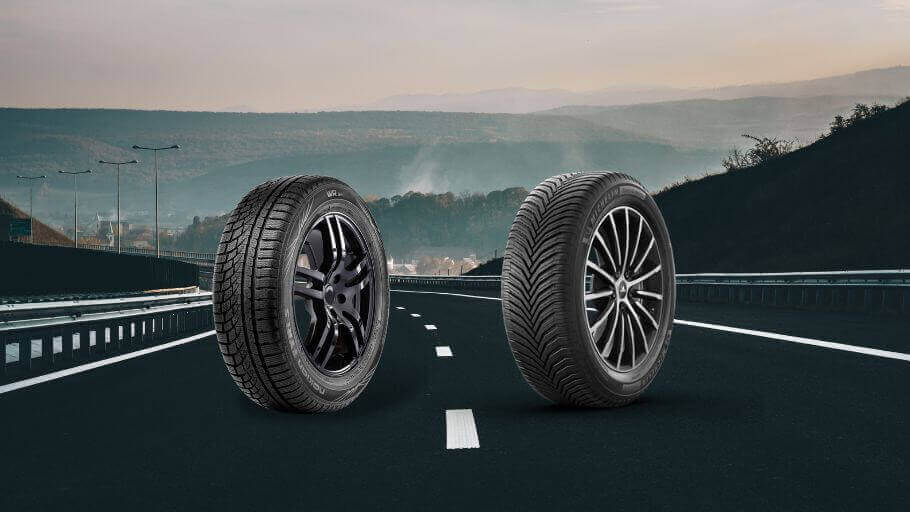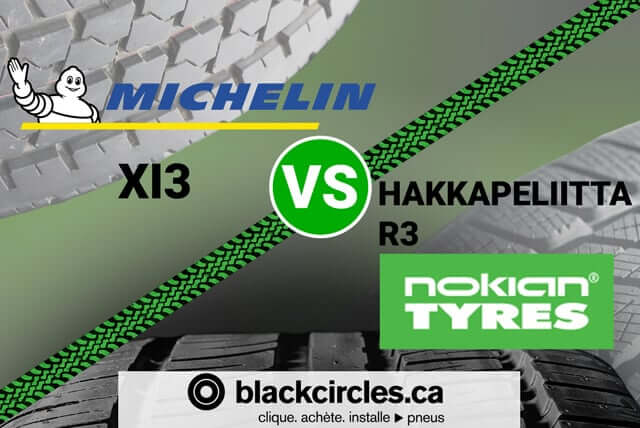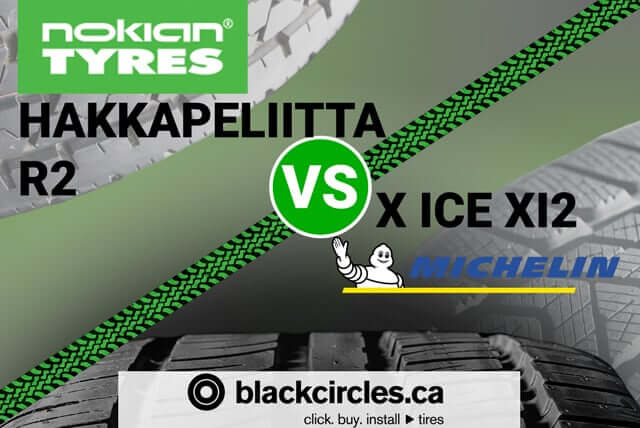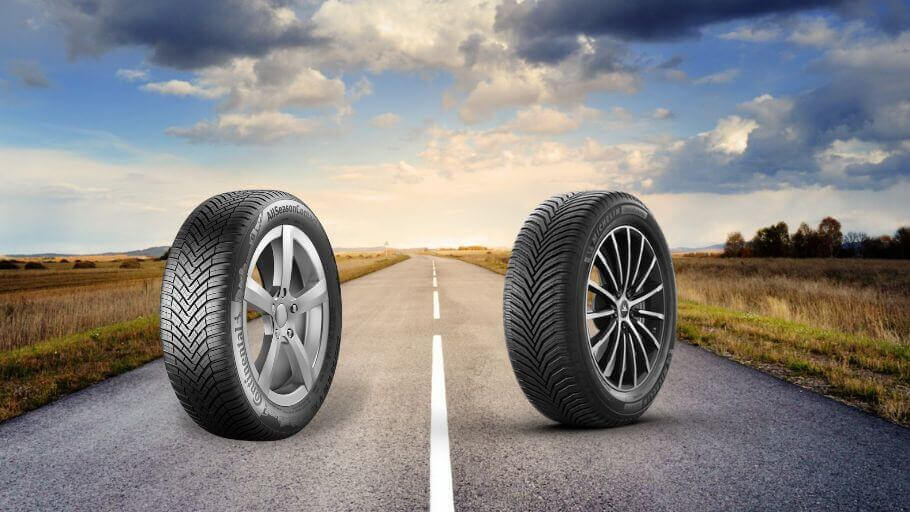All-weather tires are an excellent choice for drivers who don't often travel in extreme winter conditions. And as luck would have it, there are a number of excellent all-weather models on the market.
Among these options, are you wondering about the differences between the Nokian WRG4 vs Michelin Crossclimate 2? Blackcircles Canada helps you make the right choice with this comprehensive review. For more tips on summer and winter tires, check out our winter buying guide!
How the Nokian WRG4 and the Michelin Crossclimate 2 compare?
Like we mentioned, both of these models are all-weather tires: they are 4-season tires approved for winter driving.
This means that, unlike other 4-season tires, they are both marked with the three-peak mountain snowflake symbol. They are versatile tires that can handle every Canadian seasons, and they are legal to drive year-round in Quebec, where you could choose them over winter tires, for example.
On one side, the renowned French brand Michelin offers you the Crossclimate 2 tire. This tire was designed for cars, SUVs and minivans as well as premium and high-end performance cars. It is available in H and V speed ratings in sizes ranging from 16 to 22 inches.
The WRG4 is available in two different versions, one designed for passenger and performance cars and the other for SUVs (the WR G4 SUV). Like the Michelin tire, it is available in sizes ranging from 16 to 20 inches and H and V speed ratings.
Both models are ideal for the same types of vehicles and they are available in the same sizes. What's more, critics consistently rank both as some of the best choices in their class, beating out tires that sometimes lack capabilities in one type of weather or another.
Both models are excellent options, so which one should you choose between Nokian WRG4 and Michelin Crossclimate 2? Continue reading to learn more about their specs and performance.
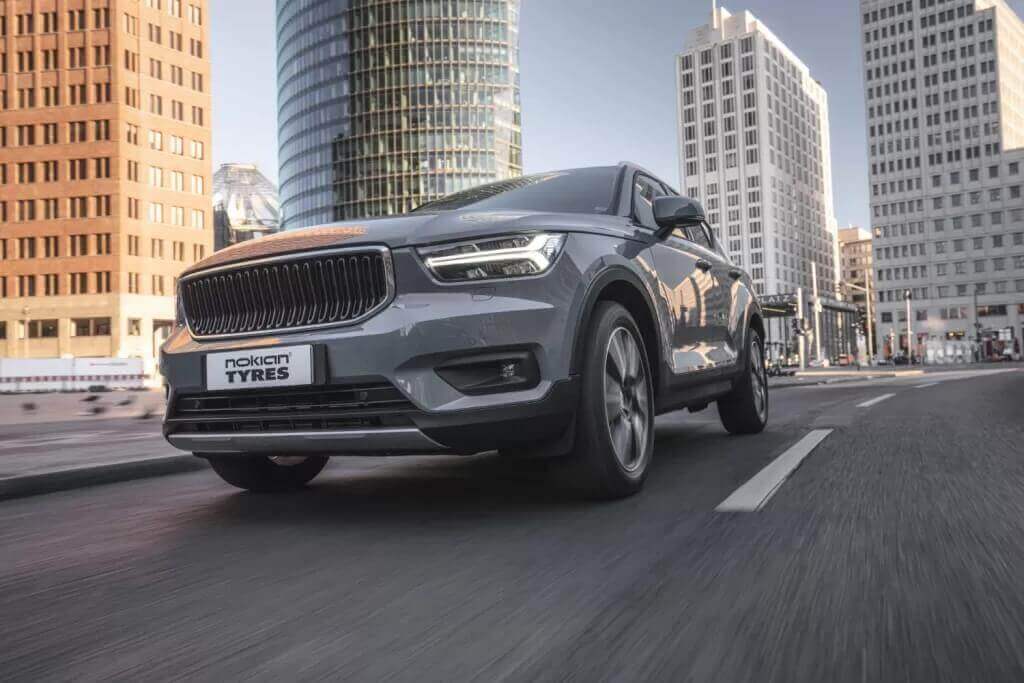
Specs of the Nokian WRG4
The Finnish company Nokian is renowned for the superior quality of its winter tires. The Nokian WRG4 is its only winter-rated all-season tire for both passenger cars and SUVs. Let's take a look at its defining features:
- Asymmetrical tread pattern
- Dual performance compound
- Aramid sidewall technology
- Centipede siping
- Coanda technology
Asymmetrical tread designs are most often used on performance tires. They provide great stability and allow for efficient water drainage. The Nokian WRG4 features grooves that allow water to drain quickly away from the tire to minimize the risk of hydroplaning. These ribs, which are located on the inside of the tire, are shaped like a fan to better funnel rain, snow and slush.
The dual performance compound delivers long-lasting performance in the summer and flexibility in the coldest winter conditions. The centipede sipes feature plenty of biting edges to bite into any surface. They are mostly located along the center rib.
Last but not least, what is Nokian's Coanda technology? Coanda technology refers to the performance delivered by the inner shoulder blocks, which have a curved and wavy shape. They drain all water from the tire very quickly, and direct it to the lateral grooves on both sides of the tire.
In short, this tire offers a very stable ride thanks to its center rib and asymmetric design, which deliver excellent water drainage and superior versatility.
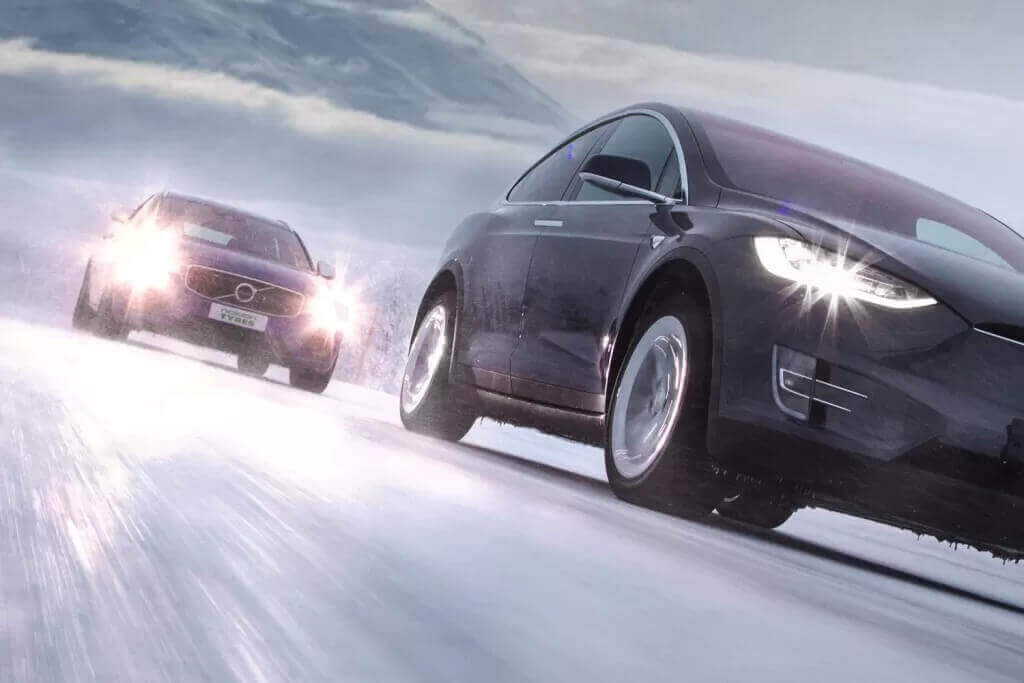
Specs of the Michelin Crossclimate 2
The Michelin Crossclimate 2 is available in a wide range of sizes, offering about 40% more sizes than the previous generation of the Crossclimate. Chances are, this tire will fit your car, whether it's a passenger car, a premium sedan, an SUV or a minivan! The following are its defining features:
- Directional tread pattern
- Highly pronounced V-shaped grooves
- Thermal adaptive compound
- 3-D SipeLock Technology
When it comes to all-weather tires, the rubber compound is of crucial importance. The compound must be able to adapt to a wide range of temperatures! That's why Michelin developed its unique thermally adaptive compound: it maintains its flexibility in colder temperatures and doesn't wear out too quickly in summer.
This is a very important feature, since it makes the difference between a winter tire and a 4-season winter-rated tire. A winter tire will wear out very quickly in warmer weather. The Crossclimate 2 is a genuine all-season tire: compared to some direct rivals, it boasts a lifespan that is about one year longer.
Another impressive feature of this Michelin tire is its wet braking performance, with braking distances up to 17 m shorter than those of its main competitors. That's all thanks to its highly angled V-groove design, which offers excellent resistance to aquaplaning thanks to its rapid water evacuation.
What about winter performance? That's where Michelin's SipeLock technology truly shines. With their biting edges, these sipes deliver superior traction on snow, ice, and other slippery surfaces.
This Michelin tire is designed to last a long time, and you won't have to change your tires with every season!
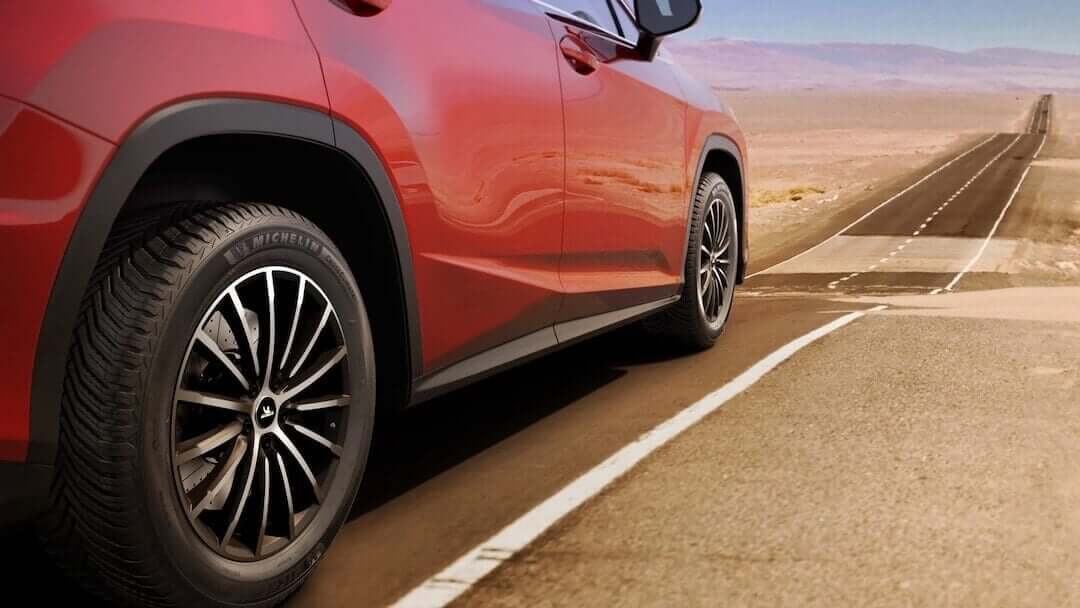 Choosing between the Nokian WRG4 and the Michelin Crossclimate 2
Choosing between the Nokian WRG4 and the Michelin Crossclimate 2Now that we've learned more about the two tires, you might be wondering which one is better for you: Nokian WRG4 vs Michelin Crossclimate 2? Above all, you should know that they are both excellent tires, ranked as the best in their class by industry experts, including those of the Car Guide.
The experts at the Car Guide also confirmed its braking performance on wet and dry roads is one of the best in the industry, like Michelin had claimed. It also offers excellent road holding, according to the experts.
The Nokian is also recognized for its performance on wet roads, due to its ability to quickly evacuate water. Moreover, critics praise it for its very excellent rolling comfort. However, according to Auto123, "there are several small downsides to consider, including limited use in winter (not great in deep snow) and a bit of noise on dry pavement in the summer.
So, if there is heavy and frequent snowfall in your area, this tire may not be your best option. As for noise, note that the Michelin model can also be noisy sometimes, but only at high speeds. This disadvantage is shared among most tires in this category.
The superior siping technology of the Michelin allows it to drive in deeper snow than the Nokian. It also delivers excellent grip on icy roads, and it's even better than some winter tires!
It also boasts a longer life than the Nokian. Although the Michelin tire is more expensive, you will be able to use it for longer, making it more cost effective in the long run. Also, some critics believe that the Nokian tire has a higher rolling resistance, which can increase its fuel consumption. Nevertheless, it is a capable tire that will serve you much better than some of the cheaper winter tires.
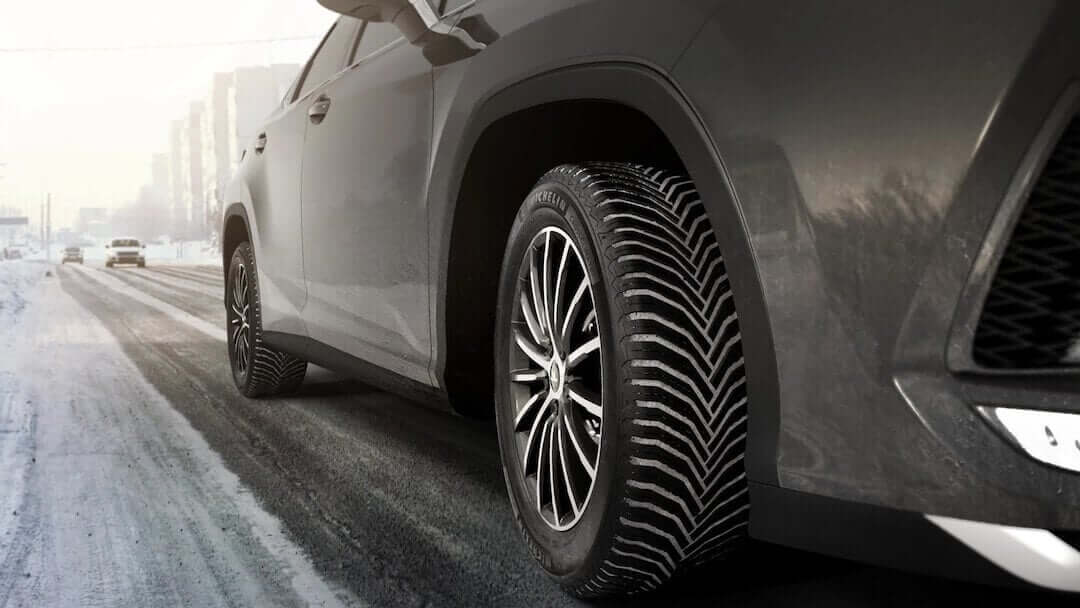
Comparing Warranties
When it comes to the Nokian WRG4 vs. the Michelin Crossclimate 2, we are looking at two excellent tires. But when deciding between the two models, you will definitely have to consider their warranty!
Let's take a look at how their coverage compares:
| Warranty | Nokian WRG4 | Michelin Crossclimate 2 |
|---|---|---|
| Mileage | 50-series or less: 70 000 km55-series and more: 105 000 kmWRG4 SUV: 100 000 km | 100 000 km |
| Limited Warranty | 5-6 years | 6 years |
| Satisfaction Guarantee | 30 days | 60 days |
| Other warranties | Pot holes (WRG4 SUV) | 3-year road assistance |
| Warranty | Nokian WRG4 |
|---|---|
| Mileage | 50-series or less: 70 000 km55-series and more: 105 000 kmWRG4 SUV: 100 000 km |
| Limited Warranty | 5-6 years |
| Satisfaction Guarantee | 30 days |
| Other warranties | Pot holes (WRG4 SUV) |
| Warranty | Michelin Crossclimate 2 |
|---|---|
| Mileage | 100 000 km |
| Limited Warranty | 6 years |
| Satisfaction Guarantee | 60 days |
| Other warranties | 3-year road assistance |


